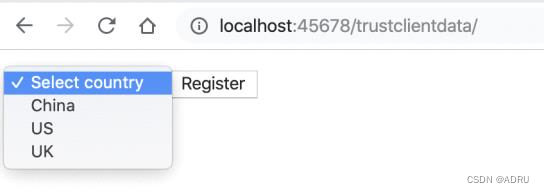目录
1.客户的数据不可信
@PostMapping("/order")
public void wrong(@RequestBody Order order) {
this.createOrder(order);
}对应的实体类如下:
@Data
public class Order {
private long itemId; //商品ID
private BigDecimal itemPrice; //商品价格
private int quantity; //商品数量
private BigDecimal itemTotalPrice; //商品总价
}这样的话,用户可能传过来的单价和总价有问题
服务端也一定要重新从数据库来初始化商品的价格,重新计算最终的订单价格。如果不这么做的话,很可能会被黑客利用,商品总价被恶意修改为比较低 的价格。
@PostMapping("/orderRight")
public void right(@RequestBody Order order) {
//根据ID重新查询商品
Item item = Db.getItem(order.getItemId());
//客户端传入的和服务端查询到的商品单价不匹配的时候,给予友好提示
if (!order.getItemPrice().equals(item.getItemPrice())) {
throw new RuntimeException("您选购的商品价格有变化,请重新下单");
}
//重新设置商品单价
order.setItemPrice(item.getItemPrice());
//重新计算商品总价
BigDecimal totalPrice = item.getItemPrice().multiply(BigDecimal.valueOf(order.getQuantity()));
//客户端传入的和服务端查询到的商品总价不匹配的时候,给予友好提示
if (order.getItemTotalPrice().compareTo(totalPrice)!=0) {
throw new RuntimeException("您选购的商品总价有变化,请重新下单");
}
//重新设置商品总价
order.setItemTotalPrice(totalPrice);
createOrder(order);
}
一种可行的做法是,让客户端仅传入需要的数据给服务端,像这样重新定义一个 POJO CreateOrderRequest 作为接口入参,比直接使用领域模型 Order 更合 理。在设计接口时,我们会思考哪些数据需要客户端提供,而不是把一个大而全的对象作为参数提供给服务端,以避免因为忘记在服务端重置客户端数据 而导致的安全问题。
推荐写法
@Data
public class CreateOrderRequest {
private long itemId; //商品ID
private int quantity; //商品数量
}@PostMapping("orderRight2")
public Order right2(@RequestBody CreateOrderRequest createOrderRequest) {
//商品ID和商品数量是可信的没问题,其他数据需要由服务端计算
Item item = Db.getItem(createOrderRequest.getItemId());
Order order = new Order();
order.setItemPrice(item.getItemPrice());
order.setItemTotalPrice(item.getItemPrice().multiply(BigDecimal.valueOf(order.getQuantity())));
createOrder(order);
return order;
}
2. 客户端提交的参数需要校验
@Slf4j
@RequestMapping("trustclientdata")
@Controller
public class TrustClientDataController {
//所有支持的国家
private HashMap<Integer, Country> allCountries = new HashMap<>();
public TrustClientDataController() {
allCountries.put(1, new Country(1, "China"));
allCountries.put(2, new Country(2, "US"));
allCountries.put(3, new Country(3, "UK"));
allCountries.put(4, new Country(4, "Japan"));
}
@GetMapping("/")
public String index(ModelMap modelMap) {
List<Country> countries = new ArrayList<>();
//从数据库查出ID<4的三个国家作为白名单在页面显示
countries.addAll(allCountries.values().stream().filter(country -> country.getId()<4).collect(Collectors.toList()));
modelMap.addAttribute("countries", countries);
return "index";
}
}
html写法
...
<form id="myForm" method="post" th:action="@{/trustclientdata/wrong}">
<select id="countryId" name="countryId">
<option value="0">Select country</option>
<option th:each="country : ${countries}" th:text="${country.name}" th:value="${country.id}"></option>
</select>
<button th:text="Register" type="submit"/>
</form>
..
以上的参数只有三个,假如有以下的方法:
@PostMapping("/wrong")
@ResponseBody
public String wrong(@RequestParam("countryId") int countryId) {
return allCountries.get(countryId).getName();
}
如何我在访问的时候直接发送以下请求
curl http://localhost:45678/trustclientdata/wrong\?countryId=4 -X POST
那么肯定会系统报错
解决办法:
@PostMapping("/right")
@ResponseBody
public String right(@RequestParam("countryId") int countryId) {
if (countryId < 1 || countryId > 3)
throw new RuntimeException("非法参数");
return allCountries.get(countryId).getName();
}
或者使用spring validation
@Validated
public class TrustClientParameterController {
@PostMapping("/better")
@ResponseBody
public String better(
@RequestParam("countryId")
@Min(value = 1, message = "非法参数")
@Max(value = 3, message = "非法参数") int countryId) {
return allCountries.get(countryId).getName();
}
}
客户端提交的参数需要校验的问题,可以引申出一个更容易忽略的点是,我们可能会把一些服务端的数据暂存在网页的隐藏域中,这样下次页面提交的时 候可以把相关数据再传给服务端。虽然用户通过网页界面的操作无法修改这些数据,但这些数据对于 HTTP 请求来说就是普通数据,完全可以随时修改为 任意值。所以,服务端在使用这些数据的时候,也同样要特别小心。
3.请求头里的内容出现错误
@Slf4j
@RequestMapping("trustclientip")
@RestController
public class TrustClientIpController {
HashSet<String> activityLimit = new HashSet<>();
@GetMapping("test")
public String test(HttpServletRequest request) {
String ip = getClientIp(request);
if (activityLimit.contains(ip)) {
return "您已经领取过奖品";
} else {
activityLimit.add(ip);
return "奖品领取成功";
}
}
private String getClientIp(HttpServletRequest request) {
String xff = request.getHeader("X-Forwarded-For");
if (xff == null) {
return request.getRemoteAddr();
} else {
return xff.contains(",") ? xff.split(",")[0] : xff;
}
}
}
通过一个 HashSet 模拟已发放过奖品的 IP 名单,每次领取奖品后把 IP 地址加入这个名单中。IP 地址的获取方式是:优先通过 X-Forwarded-For 请求头来获 取,如果没有的话再通过 HttpServletRequest 的 getRemoteAddr 方法来获取。通常我们的应用之前都部署了反向代理或负载均衡器,remoteAddr 获得的只 能是代理的 IP 地址,而不是访问用户实际的 IP。这不符合我们的需求,因为反向代理在转发请求时,通常会把用户真实 IP 放入 X-Forwarded-For 这个请求 头中。这种过于依赖 X-Forwarded-For 请求头来判断用户唯一性的实现方式,是有问题的。
比如我们可以通过模拟发送下面的请求头信息来影响业务:
curl http://localhost:45678/trustclientip/test -H "X-Forwarded-For:183.84.18.71, 10.253.15.1"
因此,IP 地址或者说请求头里的任何信息,包括 Cookie 中的信息、Referer,只能用作参考,不能用作重要逻辑判断的依据。而对于类似这个案例唯一性的 判断需求,更好的做法是,让用户进行登录或三方授权登录(比如微信),拿到用户标识来做唯一性判断
























 被折叠的 条评论
为什么被折叠?
被折叠的 条评论
为什么被折叠?










